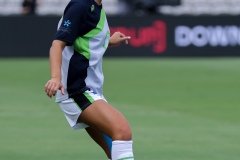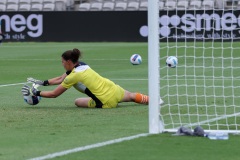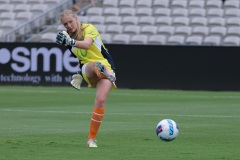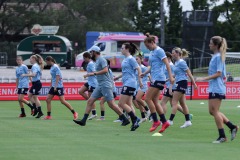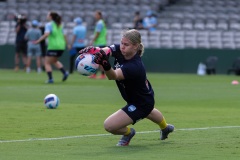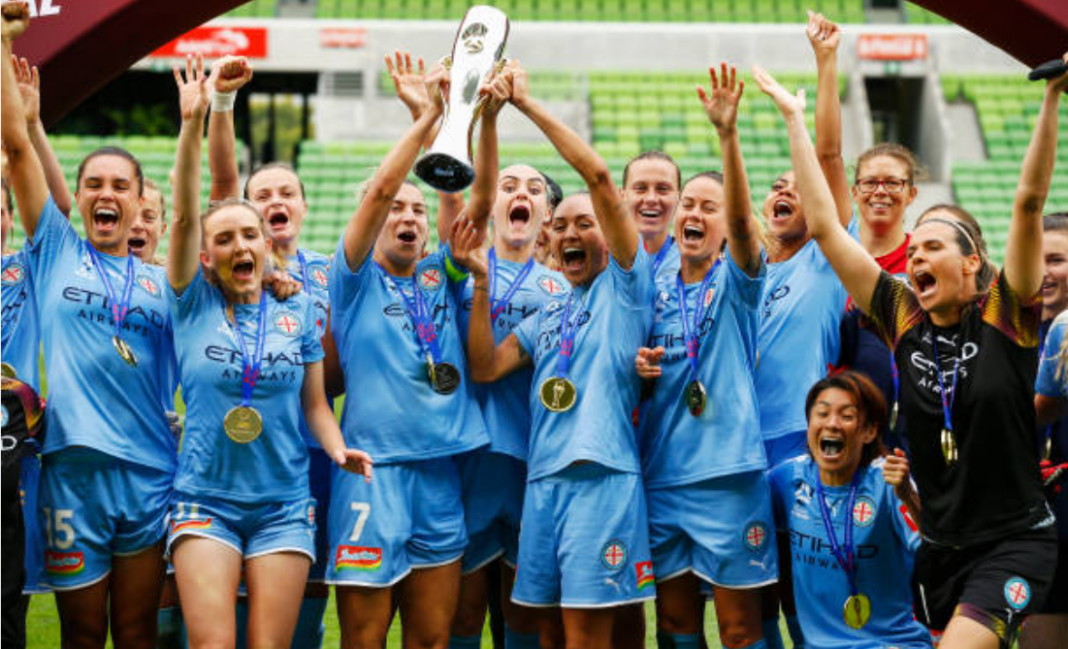

The W-League was heading towards a crossroads and the coronavirus pandemic sped that up. As other matters took precedence, the PFA’s annual W-League report has brought the focus back onto the competition. Using data and a survey completed by almost 75% of players, the report provides key insights and findings into the league’s operation.
The pandemic
It would be remiss to address any sporting competition without acknowledging the fact we are currently living in the middle of a pandemic. Nothing about these times are normal.
The effects on sporting competitions around the globe have been and will continue to be felt. Women’s sports in particular are at a higher risk of being more severely impacted by coronavirus.
PFA co-chief executive Kate Gill’s foreword addresses the juncture the league is at as well as the potential effects of coronavirus.
“We cannot allow opportunism to condemn the progress of the W-League and women’s football more generally.” she writes.
“If our belief in women’s football is legitimate then there is incredible capacity to use this crisis as an opportunity to build a better business. Coupled with the transformational opportunity co-hosting the 2023 FIFA Women’s World Cup presents, there is a responsibility to reform the game for the better.”
Exodus and existential crisis
The report begins by addressing the mass Australian exodus to Europe and the W-League’s big existential crisis.
This is a topic which merits its own article but the findings are clear. 93% of all overseas-based Aussies are now playing in Europe.
The timing of those leagues, namely the FA WSL, means many of these players will not be returning to the W-League.
These losses are just another factor in the league’s wider quest to define itself.
Pre-virus, the PFA explored the potential benefits of creating a partnership with the NWSL. This is an option they suggest again in this season’s report, however, they note that “changes to the industries may restrict a mutually-beneficial agreement.”
The FFA’s recently released XI principles states the need to “Develop a clear identity and vision for the W-League towards being a ‘top 5’ global league which rivals its counterparts in the United States and across Europe.”
The PFA acknowledges this aim but suggests that current trends indicate the W-League’s future may already be on a particular path.
The competition at this moment exists more as a development league rather than a direct competitor to overseas leagues. It has and can continue to act as launch pad, with the lure of Europe undeniable.
The report states:
“The awakening of Europe as a Women’s football powerhouse, through investment, season length, brand awareness, competitive prestige and international footballing success in France 2019 has prompted a shift in Australians plying their trade overseas, with North America and the National Women’s Soccer League (NWSL) slowly becoming the second option.”
Again, this is a topic which requires its own deeper analysis.
Money matters
The average spend on player payments increased 13% this past season with the average salary sitting at $16,344. This is also the minimum wage in the W-League.
The CBA extension ensured A-League and W-League players earn the same minimum hourly wage.
In the Australian sporting landscape, W-League players are making significantly less on average than WBBL and Super Netball players and making only fractionally more than AFLW players.
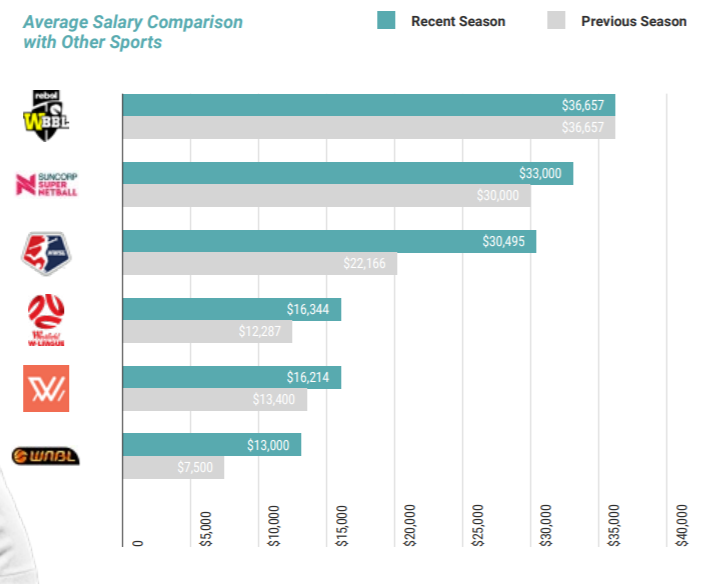
The brevity of most women’s sporting league seasons is a factor in the small pay packets and must be addressed across the board.
Unbundling the broadcast
The report states that the true value of women’s football is regularly clouded due to bundle deals with the men’s game. This is in reference to the broadcast agreement.
“No sport is better positioned to seize such an opportunity as football, due to its global nature (and fan base), many established women’s leagues, the volume of games and iconic brand connection, all of these making the women’s game a potentially lucrative latent asset waiting to be leveraged.”
Streaming platforms and social media alike are suggested by the union to purchase the rights to broadcast major women’s football leagues.
Such a move has the potential to boost the mainstream profile of women’s football including the W-League and would allow it to capitalise on the global nature of football, something that has so far been underutilised.
Continued undervaluing and underinvesting as well as an inability to think strategically and outside the box will stymie the women’s game.
However, the broadcast situation for football in Australia is already hanging on a knife’s edge. Splitting the A-League and W-League up at this time feels counter-intuitive. This doesn’t negate the salient points about the true economic value of women’s football being hidden.
The Fox Sports broadcast extension until the end of the 2020-21 season provides sufficient time to figure out how best to maximise football’s broadcast potential.
The centre of women’s football in Asia-Pacific
The W-League has long been a destination particularly for American players looking to further their game. This forms the basis of the continued suggestion of a more formal partnership between the W-League and NWSL.
However, the Aussie exodus from both leagues, coupled with the realities of the coronavirus, means the foreign contingent of the W-League could look very different in the short term.
The PFA report notes the Asian and Oceanian confederations contributed three players to the W-League in 2019-20.
A stronger relationship with Asia, as discussed in this piece by Ella Reilly in the Guardian, could be the way forward.
The As One bid highlighted its credentials as a beneficial tournament for the Asia-Pacific region as a whole. Stronger alignment between the W-League, New Zealand, and Asia could be the starting point for this well before 2023.
Room for improvement
Some of the more concerning findings related to team integration and medical standards.
A whopping 81% of respondents said they were either not at all or slightly satisfied with the W-League team’s integration with the A-League team.
The club-by-club breakdown reveals Adelaide United, Brisbane Roar, Melbourne Victory, and Perth Glory had the least satisfied players. Over 50% of their respondents said they were not at all satisfied.
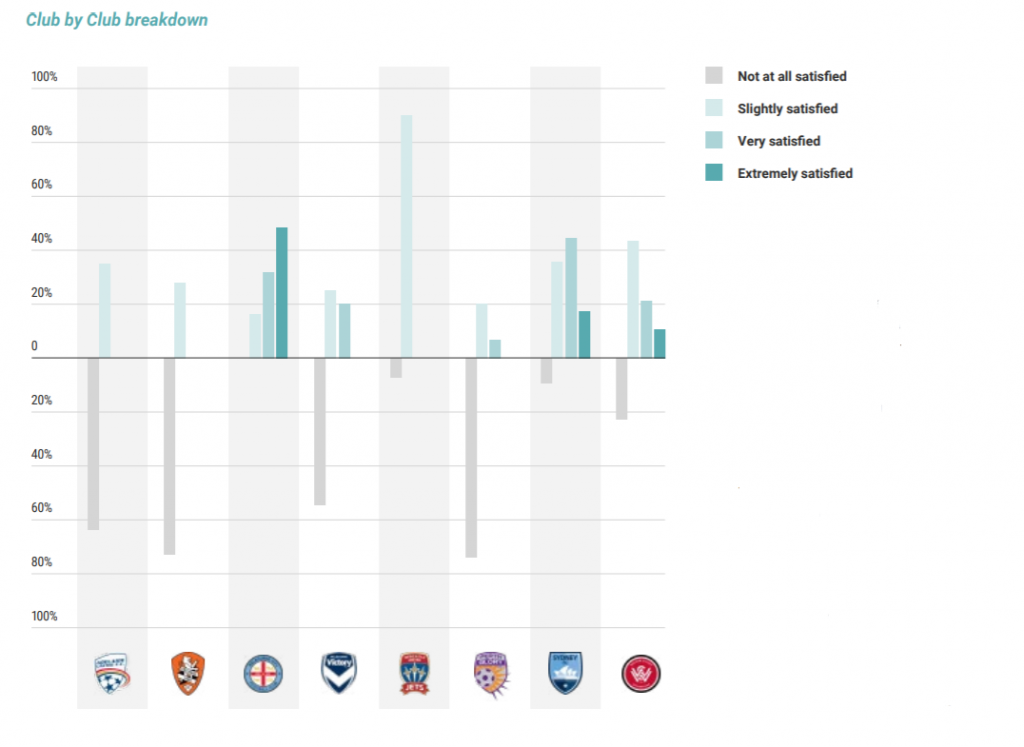

Melbourne City led the way with close to 50% of respondents saying they were extremely satisfied.
Sydney FC and Western Sydney Wanderers were the only other clubs to record some percent of extremely satisfied players.
This lack of satisfaction could be attributed to a variety of factors. Improving access to and standard of facilities, training venues, perceived levels of respect, and media coverage are just some suggestions of things which could make a world of difference.
In terms of medical standards, “In 2017/18, only 10% of players described the medical support provided by their club as “below expectations”. In 2018/19, this rose to 18%, but this season, it has risen to an alarming level of 31%.”
The 2017-18 season saw the introduction of minimum medical standards as part of the landmark CBA for the league.
Home and away
The continued calls for a full home and away season were on the agenda. One benefit of extending the season is increasing the number of match minutes available to players.


It is stark to see how few minutes are actually available to players in the W-League, compared with the A-League, NWSL, and WSL.
The report notes that “the game requires a long term roadmap to create sustainable careers solely in the W-League.”
This is a sentence which has been repeated in previous W-League reports and with good reason. Allowing women to forge careers in the W-League as men have in the A-League should be a high priority.
Read the full report here.


